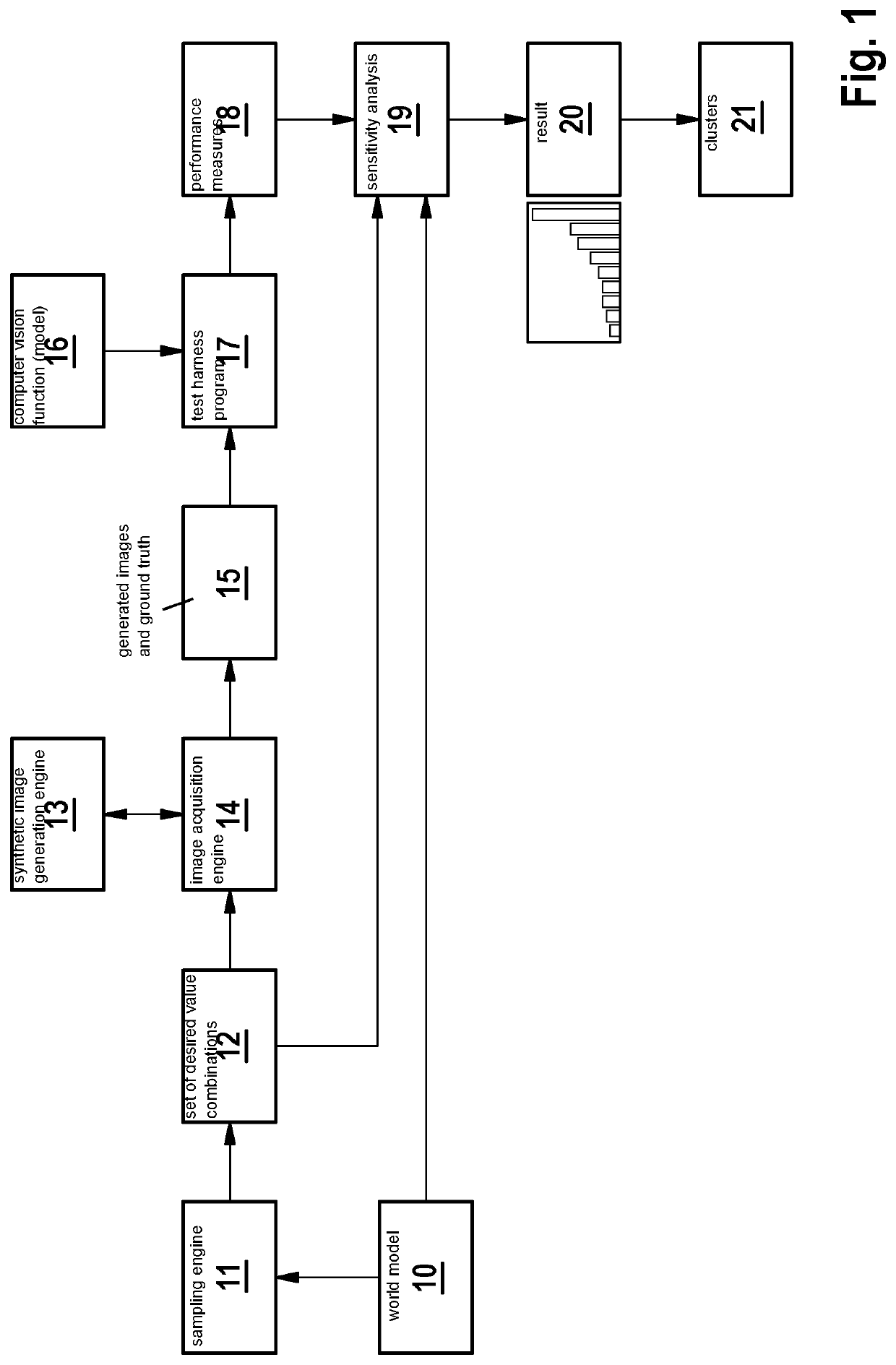Verification of computer vision models
a computer vision and model technology, applied in the field of verification of computer vision models, can solve the problems of directing additional glare towards the windscreen how to perform verification, and which attributes should be verified, and achieve the effect of reducing the number of eyes of the ego vehicl
- Summary
- Abstract
- Description
- Claims
- Application Information
AI Technical Summary
Benefits of technology
Problems solved by technology
Method used
Image
Examples
Embodiment Construction
[0052]One or more visual parameters define a visual state of a scene because it or they contain information about the contents of the observed scene and / or represent boundary conditions for capturing and / or generating the observed scene. A typical scene is characterized by a large number of visual parameters, some of which are continuous variables. Therefore, the search space for computing functions over the total number of visual parameters characterizing a typical scene is onerous.
[0053]The visual parameters can be for example: camera properties (e.g. spatial- and temporal-sampling, distortion, aberration, color depth, saturation, noise etc.), LIDAR or RADAR properties (e.g., absorption or reflectivity of surfaces, etc.), light conditions in the scene (light bounces, reflections, light sources, fog and light scattering, overall illumination, etc.), materials and textures, objects and their position, size, and rotation, geometry (of objects and environment), parameters defining the...
PUM
 Login to View More
Login to View More Abstract
Description
Claims
Application Information
 Login to View More
Login to View More - R&D
- Intellectual Property
- Life Sciences
- Materials
- Tech Scout
- Unparalleled Data Quality
- Higher Quality Content
- 60% Fewer Hallucinations
Browse by: Latest US Patents, China's latest patents, Technical Efficacy Thesaurus, Application Domain, Technology Topic, Popular Technical Reports.
© 2025 PatSnap. All rights reserved.Legal|Privacy policy|Modern Slavery Act Transparency Statement|Sitemap|About US| Contact US: help@patsnap.com



